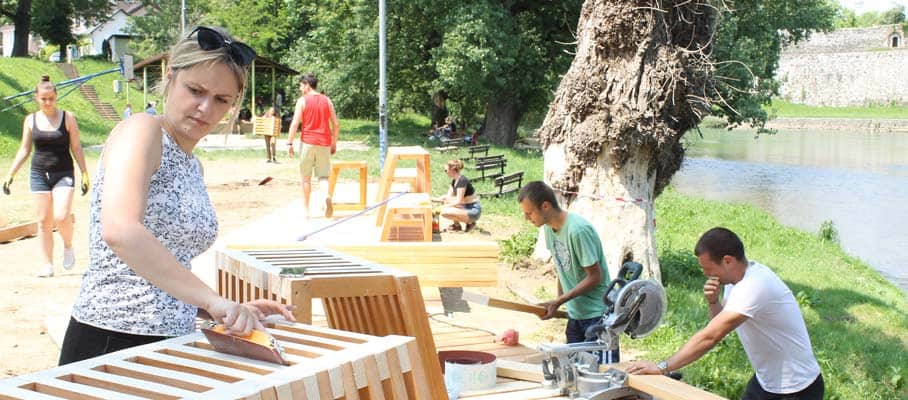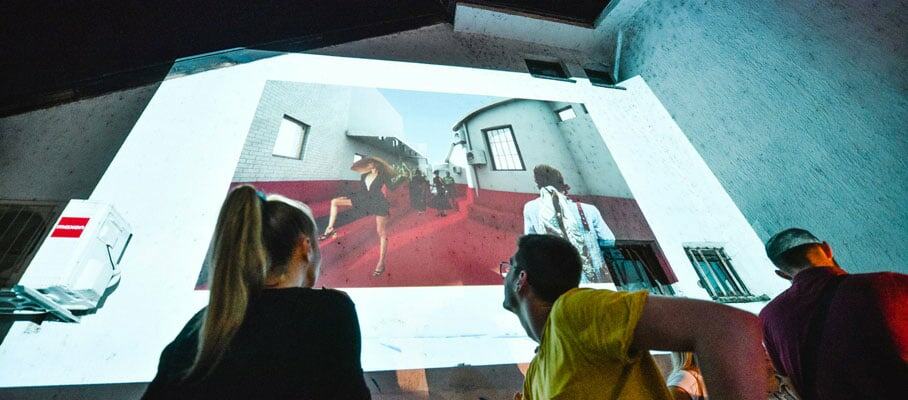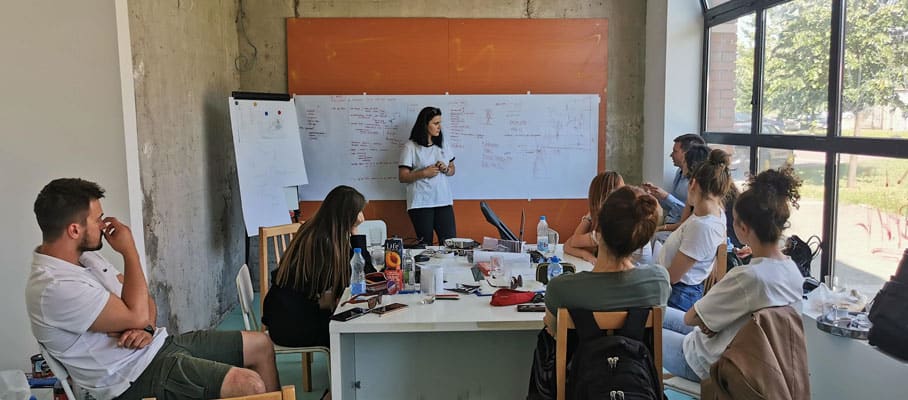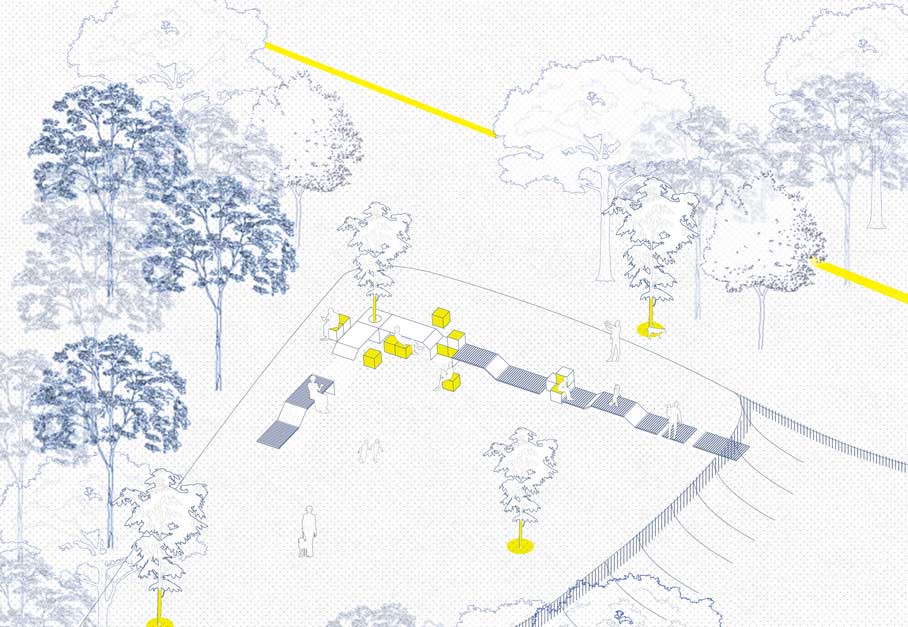Citizen Interventions For Sustainable Urban Development in Banja Luka
The question of scale in urban space is one of the most discussed in recent urban discourse. In the framework of multi-scale approaches, the development of the ongoing discourse on small-scale urban design, and its application in practice, Igor Kuvač presents examples of small-scale urban interventions in Banja Luka.
Towards A New Urban Planning Culture
A current approach to sustainable urban development is based on city initiatives: various projects that promote a new planning culture, focusing on the participation of civil society in the creation of quality and standards of urban space. This is also a desirable approach for the further urban development of Banja Luka, Bosnia and Herzegovina. In addition to a clear vision, a participatory and collaborative approach to the process is required, which becomes more important than the urban planning itself. To provide a strategic development framework, emphasis is being placed on providing creative milestones for the integration of development sectors and plural interests.

Sewage Pipes Festival, people interactions on the main square © Center for Social Research
Participation and collaboration need to be properly coordinated and directed to ensure that the energy of these actions provides the appropriate results as part of one single system, rather than individually isolated and eccentric cases without real effects on the process and the urban space itself. Therefore, the simultaneous development of spatial ideas and organisations is necessary. This, in turn, is fundamentally dependent on political will, and then again on resources, whether human or financial. To make the ideas from below really affect the spatial policies of the city, it is necessary to create mechanisms and tools such are creating funds for projects, making citizen participation easier and formalising bottom-up projects.

Banja Luka pier, workshop construction
process, photo by Zorana Marjanovic © Center for Spatial Research
Nevertheless, any kind of formalisation or legislative regulation of bottom-up projects which comes from local, regional, or national administration should be very careful because the stimulation of civic initiatives from above is often contrary to the basic principles of a grassroots movement.
Small-Scale Intervention in Banja Luka
Small-scale urban interventions in the city of Banja Luka represent a proactive spirit, strategic networking towards transdisciplinary urbanism, and scenario planning. Sustainable urban development in Banja Luka includes several civic initiatives, actions, and projects that will likely continue their ways and inspire future trends. These include for example the Street Zine Festival, a short-term urban acupuncture intervention organised by the UAA NGO in 2012. The project included competitions for artists, designers, illustrators, photographers, architects, and others, to exhibit their works in a joint exhibition in open public space of Banja Luka.
Besides the aim to popularise street art and to enable authors to exhibit outside of cultural institutions in the first street gallery in the city, the idea of the Street Zine was also to reactivate spaces that were underused and forgotten. The exhibition was set in a semi-private / semi-public space of a specially prepared outside wall of a private garage in front of the House of Youth in Banja Luka. The idea of street art was revived in the project by painting murals in Borik, a modernist neighbourhood in Banja Luka, organised by Flaster NGO.
A civic initiative called Banj Hill Recreational Zone has run a series of semi-spontaneous citizen interventions in the last few years, through which the Banj Hil has been converted into one of the most popular places to hike, do sports, or just relax and enjoy nature – instead of being converted into the commercial touristic zone which would endanger natural heritage, as had been the original plan. Interventions were both tangible (placing signposts, new benches, open gym equipment, et cetera) and intangible (promotion on the social media, organisation of music concerts and other types of events, et cetera). Banj hill is a good example of how citizens’ initiative can contribute to changing official politics and to turning over the planning trend.
Enhancing the Diversity of Spatial Relationships
Urban planning should move towards small units and towards multiple scenarios enhancing the diversity of spatial relationships that those small [spatial] units bring together into the complex structure of a city. They help the community to get involved in the process of adopting a plan, as well as simulating alternative scenarios. Compared to traditional planning tools, small intervention projects also have the ability to adapt to dynamic and unstable contexts. A small-scale project uses collaborative and participatory approaches in combination with multidisciplinarity, which leads to place-making and the strengthening of the community.
This is mostly true for the kind of participatory projects which are close to art performances in the public space, which have the ability to visualise provocative alternative scenarios and engage local participants (citizens, workers, associations). They allow cooperation between planners and local units, which helps strengthen the social network, includes citizens in the process of strategic urban planning and creates a solid planning base for the city.

2019. Maslesa’s backyard: public presentation event for a broader audience on the intervention site. Photo by A. Cavic © Center for Spatial Research
In the last few years, small-scale projects by the Center for Spatial Research had a significant impact on space and community, involving a wide range of actors in the urban intervention process (with an emphasis on bottom-up processes) and innovations. The Center for Spatial Research is a multidisciplinary live studio project of collective “learning by doing” with international student participation and an urban acupuncture approach. It includes theoretical research, the design of a small urban intervention, and its construction (within a student workshop) at specific locations in open public space.
Some of the small scale urban intervention projects in Banja Luka are: Banja Luka’s pier (2017), #BLink urban installation (2017), Domesticating Open Public Space (2019), Open Amphitheater (2019), Maseša’s Backyard (2019), #EUREADR Library Under Treetops (2021), and Pipes Festival (2021).

#EUREADR_ Library under the treetops_ Creative chaos © Center for Spatial Research

2021. #EUREADR Library under the treetops © Center for Spatial research
With a series of small-scale urban interventions, realised within students’ workshops, the project has been expanding the network of open public spaces since 2017. It has provided new layers of the urban landscape by caring about safe and accessible public spaces released from previously abandoned, peripheral, and dangerous urban voids. Participants were faced with the challenge of critical thinking on scales of the contemporary urban environment, as well as with problems of post-transitional contemporary cities while reflecting on innovative models and proactive approaches to urban transformations.
